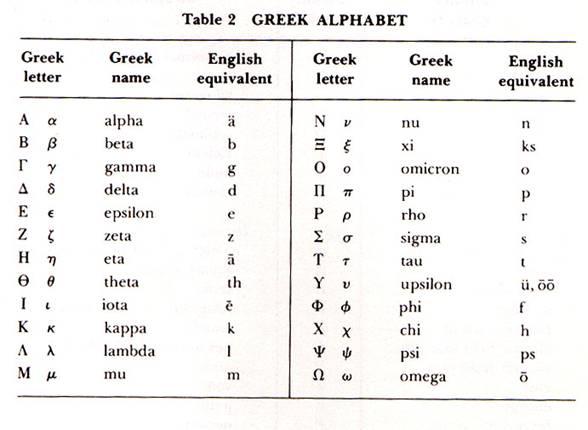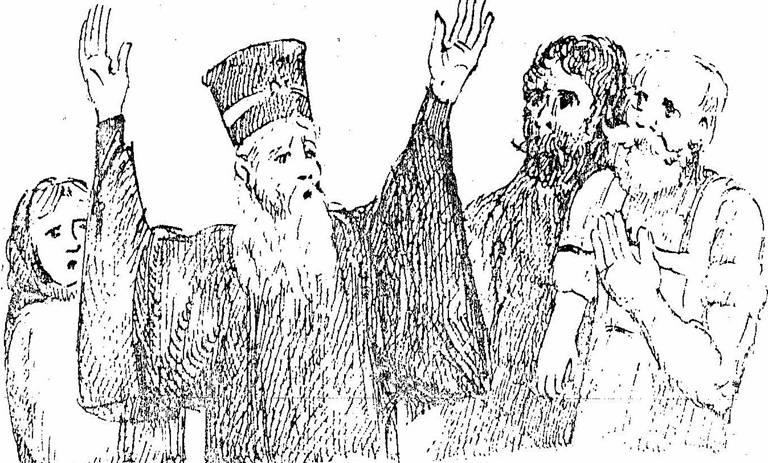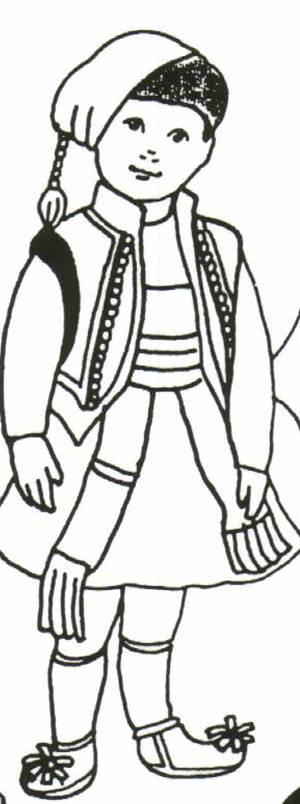Greece
Greece/Constantinople
Home Activities:
- Visit a Greek restaurant in Highlandtown; visit a Greek parish for vespers or a weekday service.
- Have some fun with the Greek alphabet just as we did earlier with the Cyrillic. Can you write secret messages using Greek letters to spell the words? Try: “The apostle Paul traveled to Greece and started the church there.”
- Try some Greek food at home (spinach pie, lamb, baklava are all easy to make); your child and his friends can each make his own personal baklava by painting melted butter on a single sheet of phyllo pastry (do this very fast, since until painted the pastry dries up incredibly quickly), sprinkling with a mixture of finely ground walnuts with a touch of sugar and cinnamon, folding each side to the center in thirds to make a long strip, sprinkling again with walnut mixture, and rolling from one end like a sleeping bag. Bake at 350 degrees for about 10-15 minutes, until slightly crispy. While the pastry is baking, mix about 2-3 cups water (depending on the number of pastries) with 4-5 cups sugar to make a slurry, add a cinnamon stick, and heat in a saucepan until all the sugar melts. Add about ½ cup honey and pour over the baked goodies. If they can wait an hour or so to eat, the baklavas will be even better, but if not, let them dip into the sauce that will not yet have soaked in.
- They can also have great fun with Greek hand-shaped rolls called koulourakia: Separate 4 eggs. Beat the whites until stiff, then add the yolks, 2 cups sugar, 1/3 cup orange juice, ¾ cup melted butter or margarine – all while beating constantly. Sift 3 tsp baking powder with 1 cup flour and add to mixer. Then knead in 5-6 more cups flour until you have an elastic bread dough. Give each child a ball and have him roll it into a long snake. Lay on greased cookie sheet in fanciful patterns – snail, octopus, figure 8, etc. Brush with beaten egg for glaze and bake at 350 degrees for 15-18 minutes until golden.
- Try some Greek dancing; get the music out of the library, hold hands with the leader holding a red scarf in his free hand, and with small children just run, kick, and jump like follow-the-leader, making spirals and snakes around the room.
- Learn to say “Christos anesti; alethos anesti” for Pascha.
 Prayer: Lord, help us to enjoy all the traditions that make Your church so much fun.
Prayer: Lord, help us to enjoy all the traditions that make Your church so much fun.

ST. COSMAS AITOLOS
About 250 years ago there lived in the land of Greece a monk named Cosmas Aitolos.
Cosmas lived for 17 years in the monastery on Mt. Athos. But, God told Cosmas to leave the monastery. The Greeks had been ruled for many, many years by the Moslem Turks. Many had forgotten the Lord Jesus. God asked Cosmas to bring His people back to Him.
Cosmas traveled for 20 years all around the land of Greece. He built schools and
churches and gave people crosses and icons. Soon, people heard of this holy man and came to hear him preach. Wonderful things would happen while Cosmas was teaching – a tailor with a withered hand was healed, a rich noble could hear again.
Many times Cosmas had to preach outdoors because of the huge crowds. They would
stick a large cross in the ground where Cosmas was going to preach to let people know. But, one day, a Turkish soldier pulled out one of the crosses. Suddenly the earth shook and the soldier fell down foaming at the mouth. When he woke up, the soldier knew he had been punished for taking down the cross. He put it back up.
But, many of the people, especially of the Jews and Turks, did not want Cosmas to
keep preaching about Jesus. So, the ruler ordered Cosmas to be killed. The soldiers took the old monk and killed him by tying his neck to the trunk of a tree. Cosmas is also called “Equal to the Apostles” because he brought the Greek people back to the Lord.

VASILIOS IS FROM GREECE